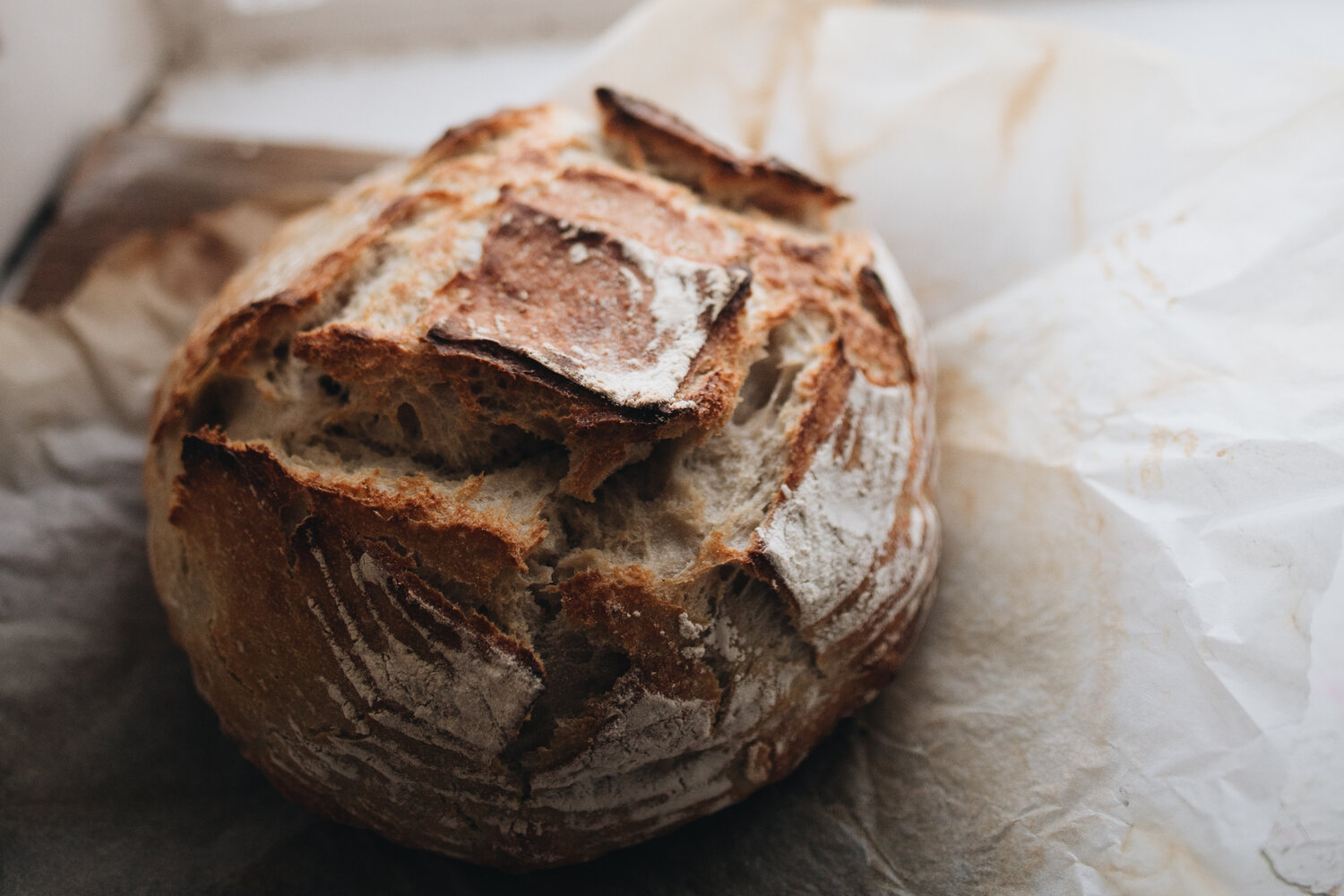Sourdough Caraway Rye Bread
One of my not-resolutions resolutions this year is to do more baking with whole grains. We spend so much of the year making white sourdough for guests - its such a people pleaser - that we don’t really stretch ourselves when it comes to baking. The recipe is the same, we know it by heart and can make it now by eye.
But we actually prefer darker loaves. Wholemeal flour feeds more of the bacteria in sourdough, allowing for a richer, more sour flavour. It can be hard to get that really sour flavour we associate with sourdough from all white loaves and we miss it, even if the kids don’t.
One of our tiny goals in the next few years is to grow more of our flour, not just wheat, but to use local grains such barley from our neighbour and oats from up the road. There is some amazing work going on locally around grain growing via the Soil to Slice project with Scotland the Bread. We aren’t yet in a position to grow anything ourselves, but supporting local growers is just as important. This year we invested in a small grain mill to aid in our endeavours with the help of a small teaching grant.
By no means does one need a grain mill of their own to make wholemeal bread. I am so resistant to advocate buying “stuff” for breadmaking as I don’t think one needs it. However, as someone who teaches and writes about sourdough, it felt like a good addition to our kitchen. Fresh milled grains have a whole range of benefits for bread making - more nutrients, less processing, and a taste that is just…better.
There was no doubt about the bread that we would work on first. With a life spent in Jewish delis, it was always rye bread that has my heart.
Rye is quite an incredible little grain variety. It withstands the cold and grows better on marginal land than traditional wheat varieties. In bread making, it has less gluten than wheat which is what gives rye bread its stodginess and why many people can stomach rye bread when wheat is harder on their gut.
This bread still uses strong white flour to give it the strength and gluten it needs to act like the sourdough loaf we know and love. If you want to up your rye content beyond 50% in a loaf, my advice would be to bake it in a loaf tin to help keep its shape. The rye on its own just won’t hold well in a home kitchen. This recipe also adds a bit of an extra step from my usual recipes - autolysing. By mixing just the flours and water before the sourdough, you give the flour a chance to hydrate and an opportunity for the dough to build strength to compensate for the rye. It helps get a less floppy loaf.
I have added caraway seeds, because in my mind that is what makes a rye taste like rye. By all means, leave those out. Goodness knows my kids ask me to.

Sourdough Caraway Rye
Ingredients
- 200g active starter at 100% hydration
- 400g warm water
- 250g wholemeal rye
- 450g strong white flour
- 15g salt
- 2 tbsp caraway seeds
Method
- Add your rye flour, white flour and water to a bowl and mix well. Let stand somewhere warm for 30 minutes.
- Add your starter and mix well.
- Leave, covered for 30 minutes.
- Begin your stretch and fold. Stretch and fold 3-4 times over 2-3 hours, adding the flour in on your first stretch and fold.
- Cover the bowl and place in the refrigerator overnight.
- in the morning, take out your bread and begin shaping by stretching the dough into a long rectangle.
- Sprinkle your caraway seeds over the dough.
- Fold the dough in thirds like a letter then roll in from the end.
- Shape into a round.
- Place in a prepared banneton and stick back in the fridge 8 hours to overnight.
- To bake: Preheat the oven with a dutch oven or covered casserole pot to 220c/400f
- Turn out your dough onto a baking parchment and score.
- Slide the dough into your pot and cover with the lid.
- Turn the heat down to 180c/360f and bake for 35 minutes, covered.
- Remove the lid and bake for an additional 5 minutes to brown.




